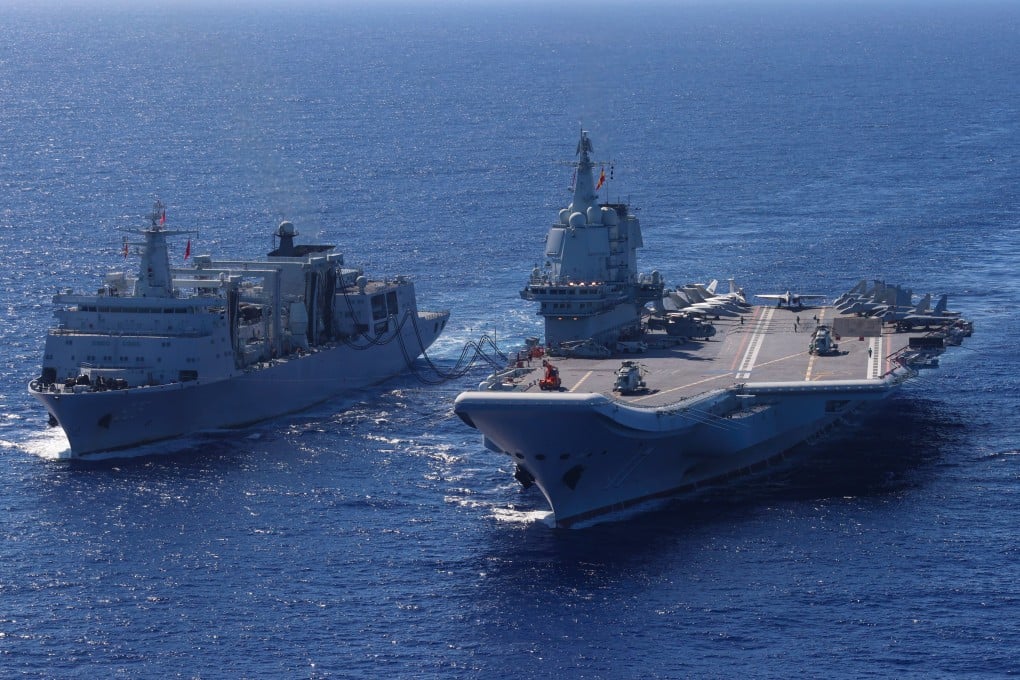Advertisement
How are Chinese aircraft carriers pushing limits and testing boundaries in the Pacific?
Training Liaoning and Shandong carriers against each other offers experience that even US military cannot gain in battle: analyst
Reading Time:3 minutes
Why you can trust SCMP
2

New details emerging about a rare Chinese military drill involving two aircraft carriers in the Western Pacific last month reveal that the vessels are training with greater intensity and complexity, according to experts.
One analyst said that by testing themselves against each, the Liaoning and Shandong carriers could gain a level of experience that even the United States military could not gain in battle because it was usually engaged with far less powerful rivals.
Since Monday, state broadcaster CCTV has released several clips of drills focused on reconnaissance and early warning, defensive and counterstrike operations, anti-surface assaults, air defence and day-and-night tactical flights by carrier-based aircraft.
On Thursday, the Shandong arrived in Hong Kong for a five-day port call.
Advertisement
In the latest drills, in June, the two vessels operated beyond the second island chain in the Western Pacific together for the first time, reaching waters near Japan’s easternmost islands and as far as 965km (600 miles) northeast of Guam, the US’ westernmost territory.
The drills were different in operations and strategic messaging from China’s first dual carrier exercise conducted in October, which mainly took place in the South China Sea, with additional manoeuvres in the Yellow and East China seas.
Advertisement
Timothy Heath, a senior international defence researcher at the US-based Rand Corporation, said the key difference was “greater complexity and intensity”.
“By contrast, last year’s exercise was essentially a trial run as it was the first time two carriers operated together. They did not travel as far or for as long a time, and the drills were simpler,” Heath said.
Advertisement
Select Voice
Choose your listening speed
Get through articles 2x faster
1.25x
250 WPM
Slow
Average
Fast
1.25x
